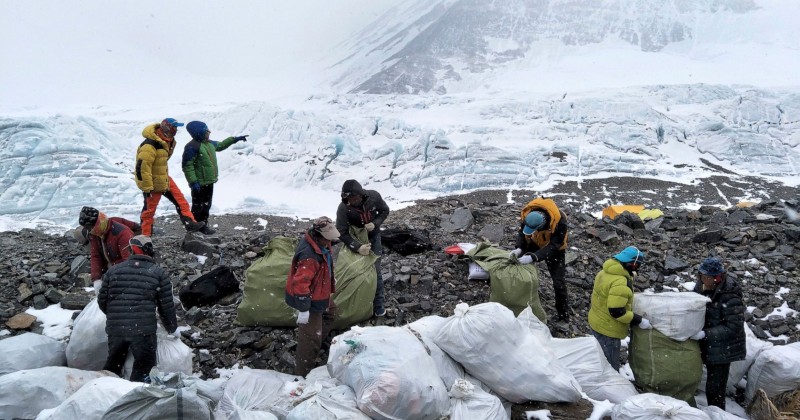
Mount Everest’s highest camp is heavily littered with garbage, which could take years to clean up, according to Ang Babu Sherpa, who led a cleanup team. This Nepal government-funded team, composed of soldiers and Sherpas, removed 11 tons of garbage, four dead bodies, and a skeleton during this year’s climbing season. Despite their efforts, Sherpa estimates that 40-50 tons of trash, including old tents, food packaging, gas cartridges, oxygen bottles, tent packs, and ropes, remain frozen at the South Col camp, located at an altitude of 8,000 meters.
Since the first successful ascent in 1953, climbers have left behind more than their footprints, contributing to the accumulation of waste over decades. While recent regulations requiring climbers to return with their garbage have reduced littering, much of the remaining trash dates back to earlier expeditions. The cleanup team faced significant challenges, including low oxygen levels, blizzard conditions, and extreme cold, which made it difficult to dig out frozen garbage and bodies. They often had to wait for favorable weather, as digging through the ice was laborious and time-consuming.
The cleanup effort involved collecting garbage from higher altitudes by Sherpas and from lower levels and base camp areas by soldiers. The collected waste was then transported to Kathmandu, where it was sorted for recycling. The oldest item found was a rechargeable battery from 1957. According to Sushil Khadga of Agni Ventures, the agency managing recyclable waste, the harsh conditions at such high altitudes force climbers and their helpers to prioritize their survival over retrieving their waste, leading to the persistent problem of garbage on Everest.

Post Your Comments